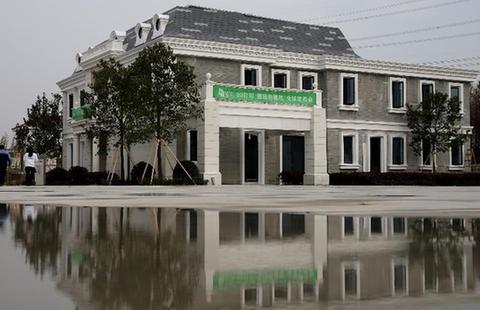
The National Development and Reform Commission last week announced detailed plans for its first pilot plan for electricity transmission and distribution tariff reforms in Shenzhen, a move seen as a breakthrough for the world's largest electricity consume.
The top price regulator also announced a separate pilot plan in the Inner Mongolia autonomous region.
The reform will change the financial model of power grids. At present, their profits come from the difference between on-grid and retail tariffs.
Instead, the NDRC will oversee their gross revenue. Analysts expect this change to have a significant impact on their profits.
China drew up a comprehensive electricity reform plan a decade ago, but much of that plan was not implemented as planned for a variety of reasons, such as electricity shortages and monopoly conditions in parts of the industry.
Tariff reform constitutes a breakthrough that will restart the process of change by increasing the transparency and efficiency of the power sector and introducing market forces.
The NDRC said tariff reforms aimed at fostering a competitive market will benefit all parties in the long run. Officials said that T&D tariff reform will be promoted in more regions "at a pace faster than expected".
The new electricity tariff mechanism took effect on Jan 1.
Accurate calculation of grid operators' profits is one of the thorniest issues in the reform process. Grid operators have been criticized for keeping their costs opaque through a lack of disclosure.
Setting tariffs independently will be an effective way to strengthen cost controls and monitor the revenue of grid operators.
And with the potential to separate the power transmission and distribution businesses, reform will gradually weaken the dominant position of grid companies in China, said a report by Nomura International (Hong Kong) Ltd.
The Shenzhen pilot will be carried out under the supervision of the China Southern Power Grid Co.
The pilot program in western Inner Mongolia involves a relatively independent network.
Those choices have left industry insiders wonder when similar reform will be promoted in areas covered by the network of the State Grid Corp, the largest grid enterprise, which transmits and distributes electricity for 1.1 billion people in 26 provincial regions.
Reform in China's power sector is no easy thing, and takes time, given the sector's size. State Grid has more than 1.86 million employees. Another T&D giant, China Southern Power Grid, has more than 316,000 staff.
Any fundamental reform will encounter resistance, but the steps announced have put the drive on the right track. China's bulky power sector needs to become more efficient.
The changes will help increase the transparency of the power sector's value chain and in turn bring reform to other parts of the power sector, including the effective implementation of the coal-power tariff linkage mechanism, said Nomura.
A broader reform plan, Opinions Regarding the Deepening of the Power Sector's Reform, has been submitted to the State Council (cabinet) for approval and will be released soon. That plan aims to separate power transmission and distribution and encourage private capital to invest in the power distribution sector, creating enormous business opportunities to new players.
Tariff reform is a crucial step in a larger process.
But further reforms such as enterprise restructuring need to be considered. It is all part of the government's efforts to promote reform of State-owned enterprises.








